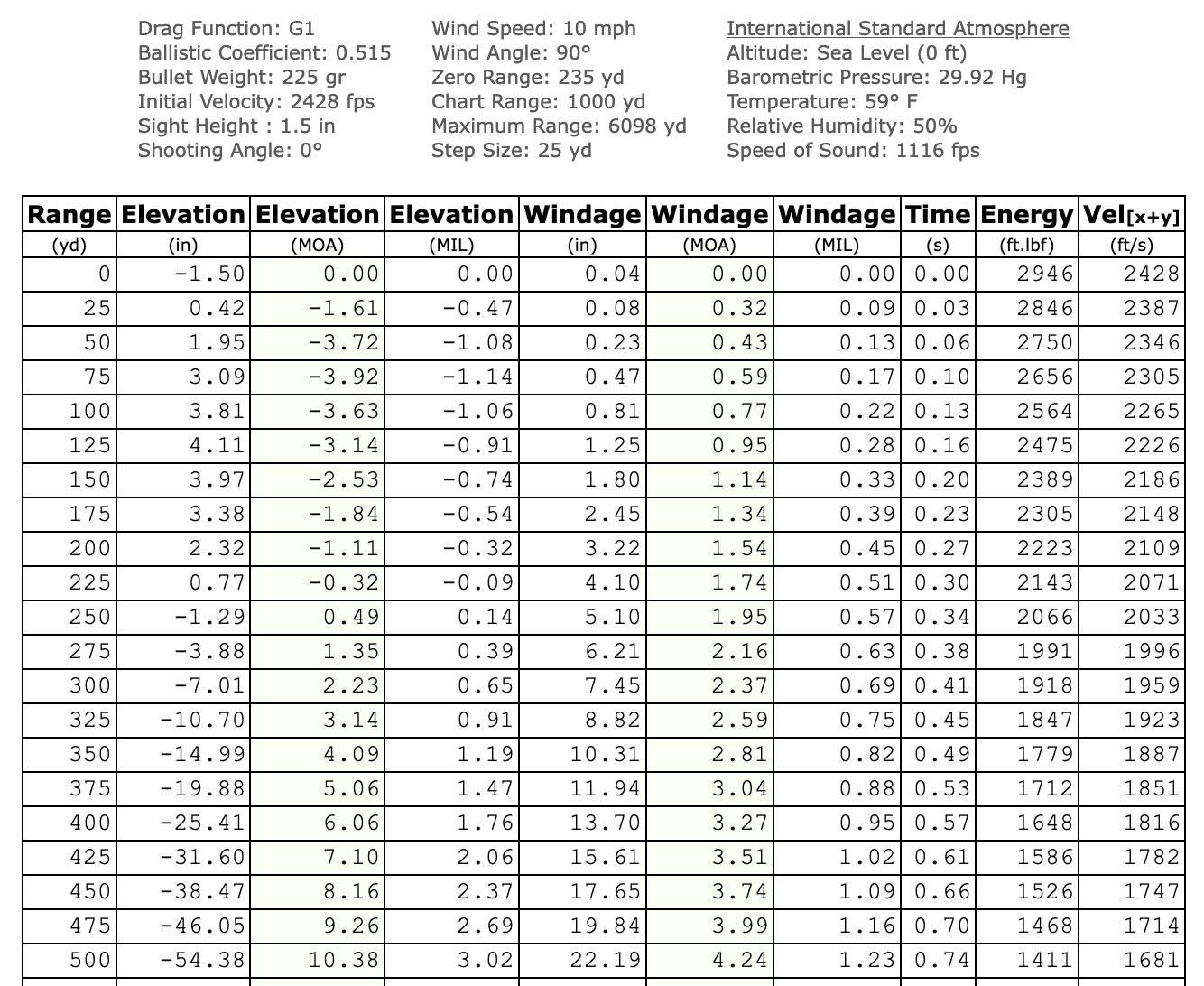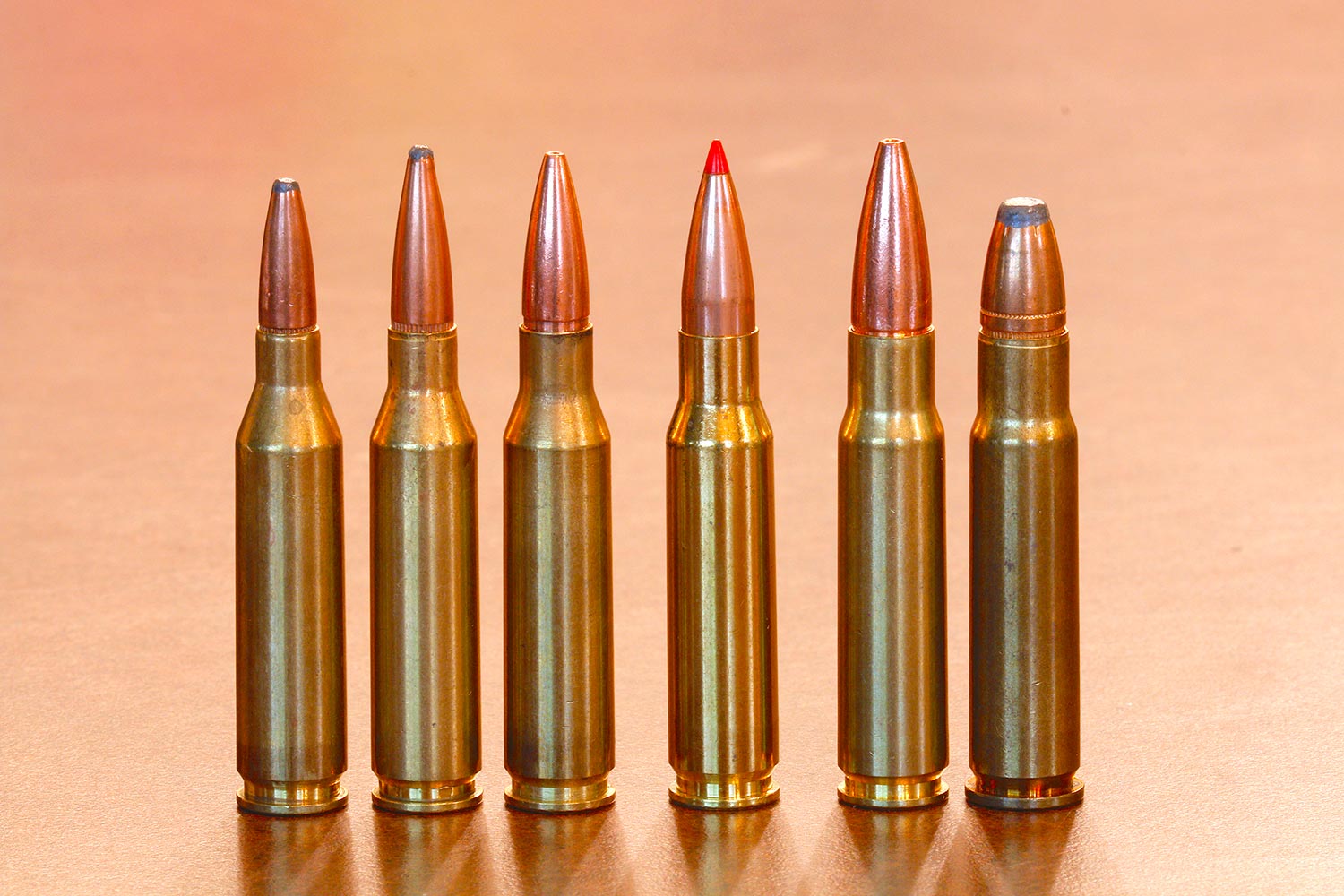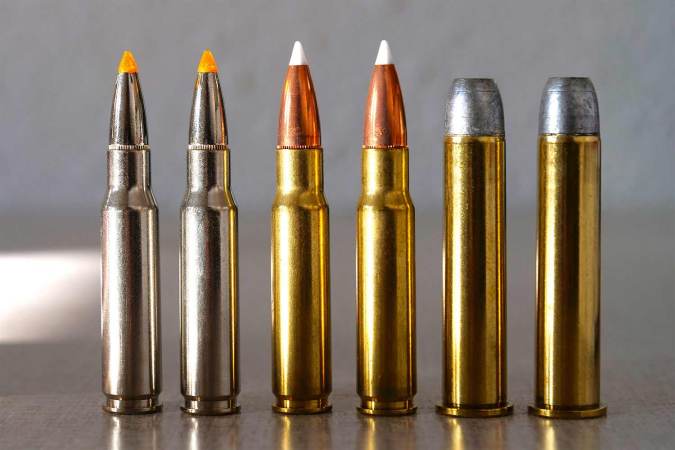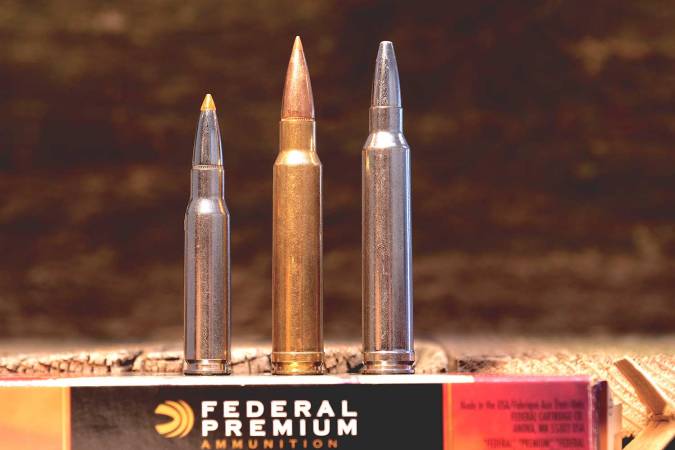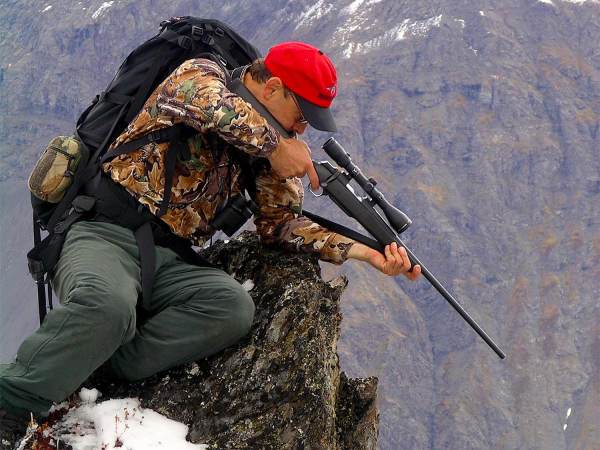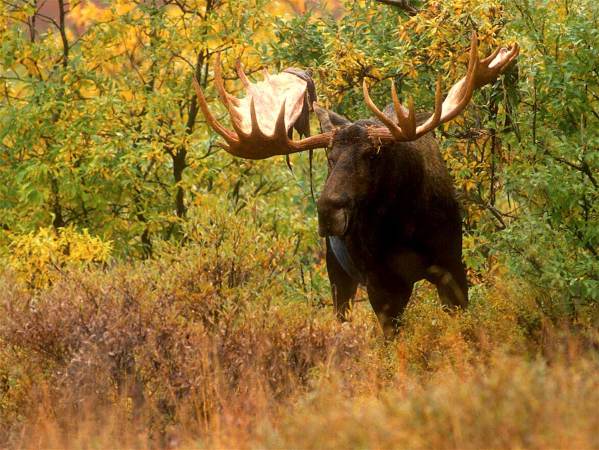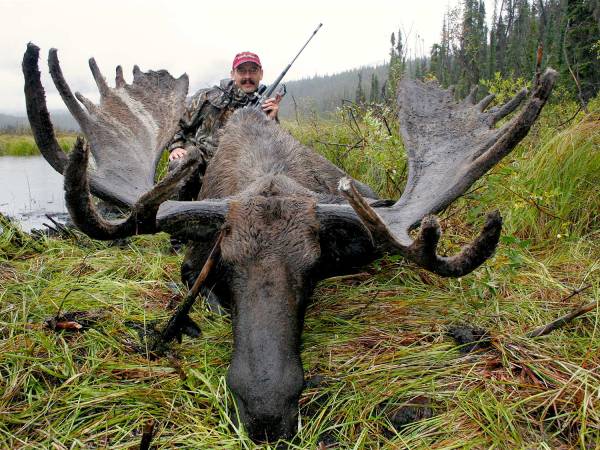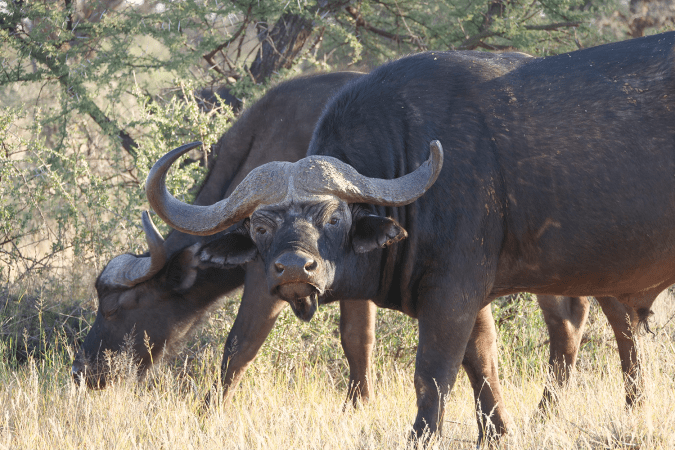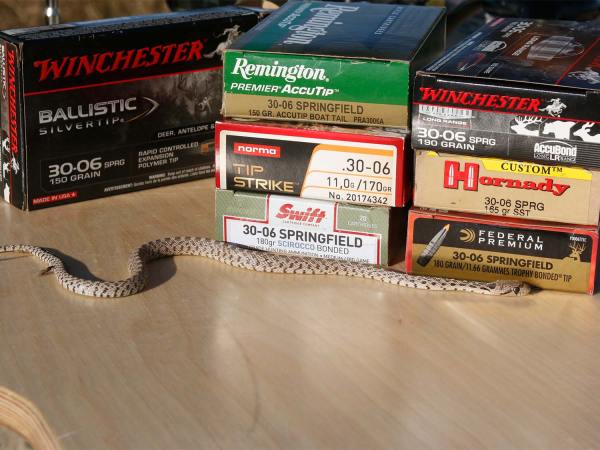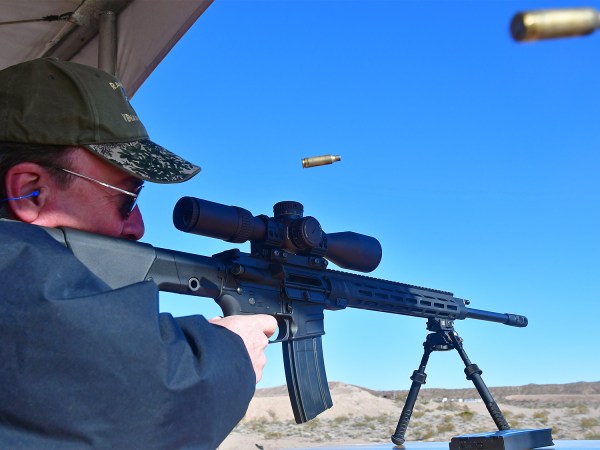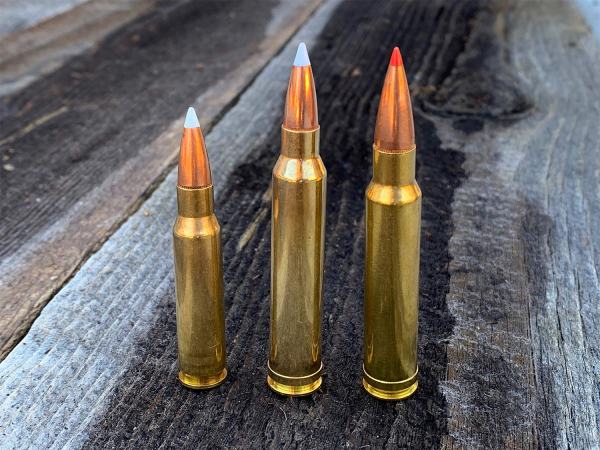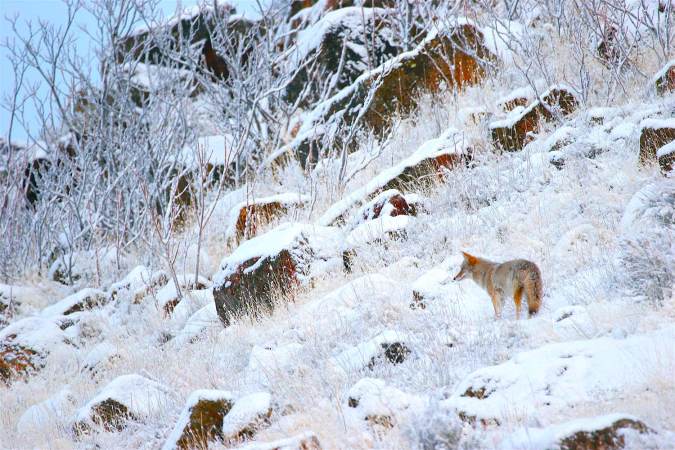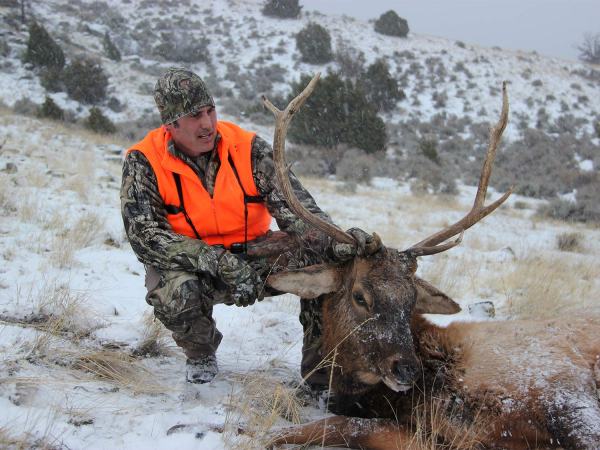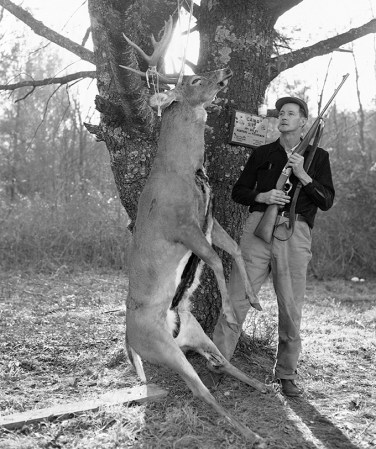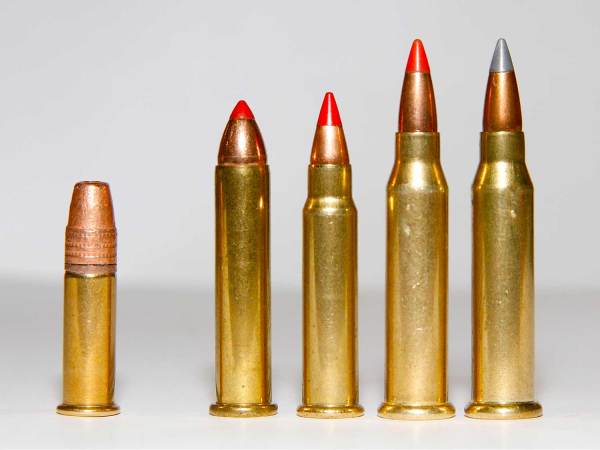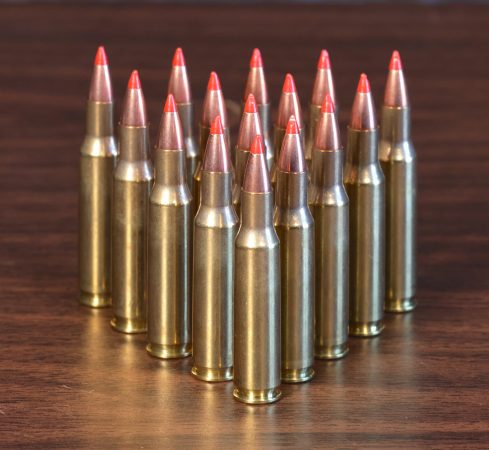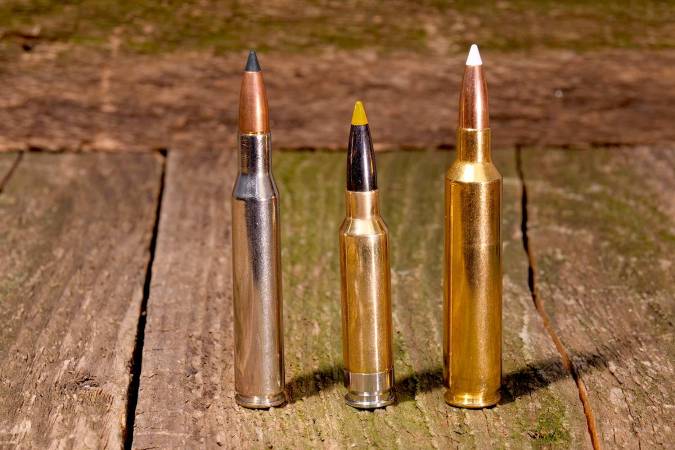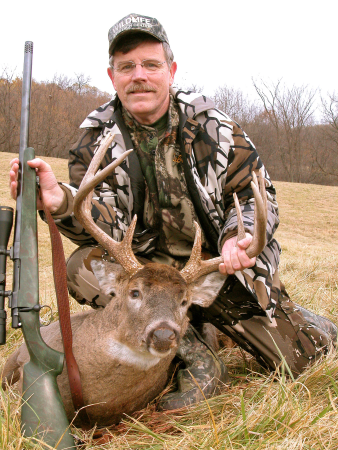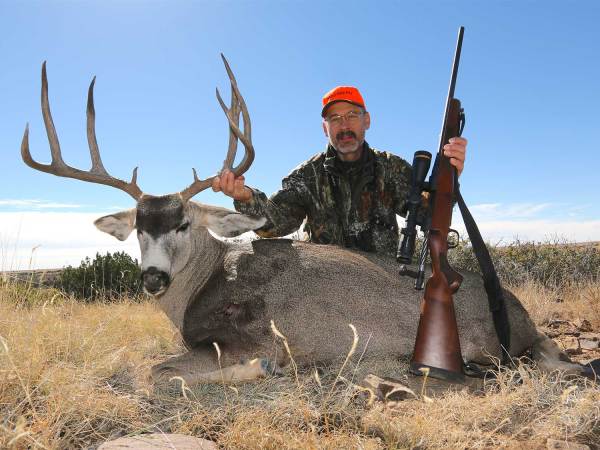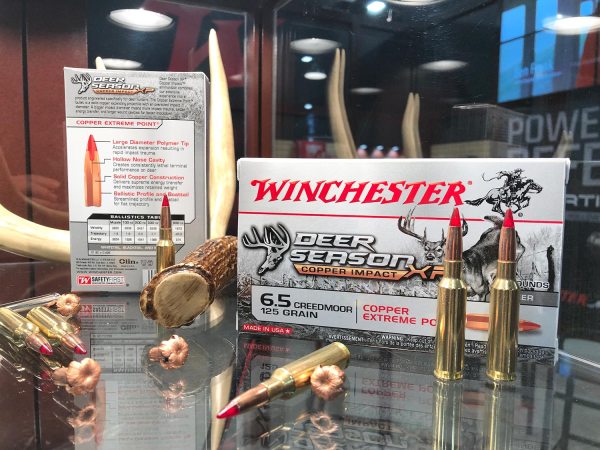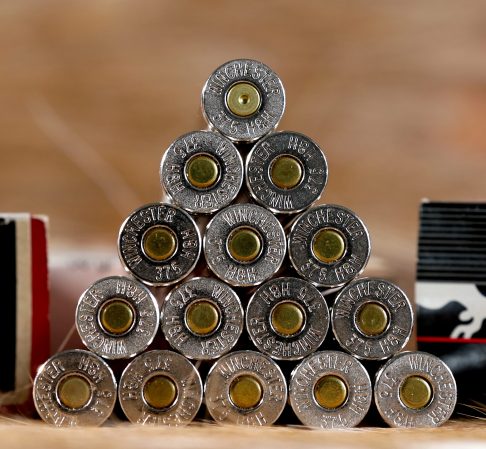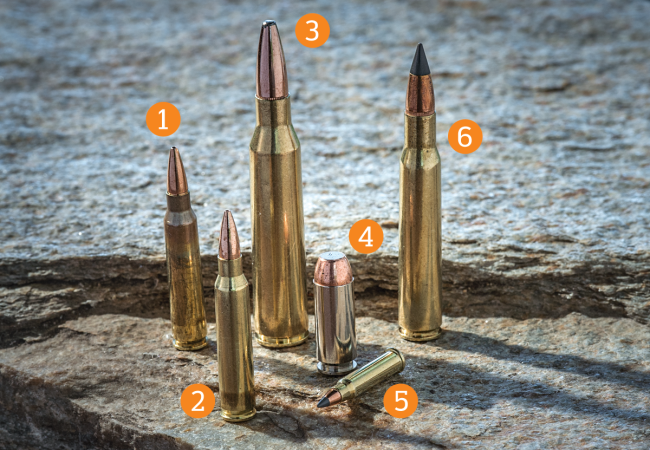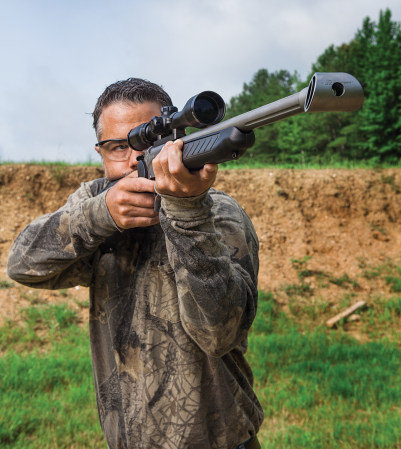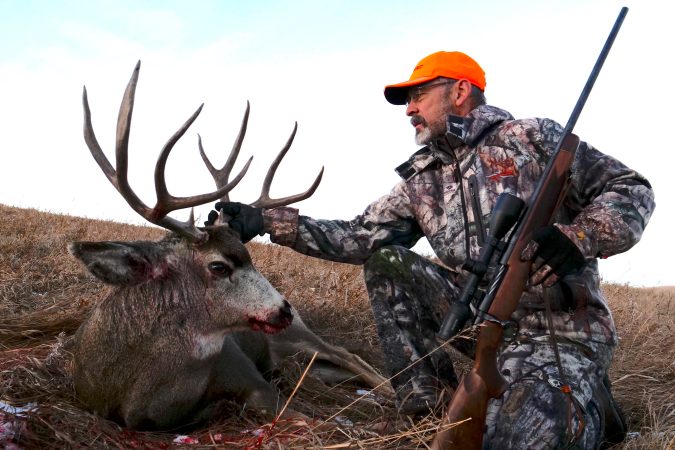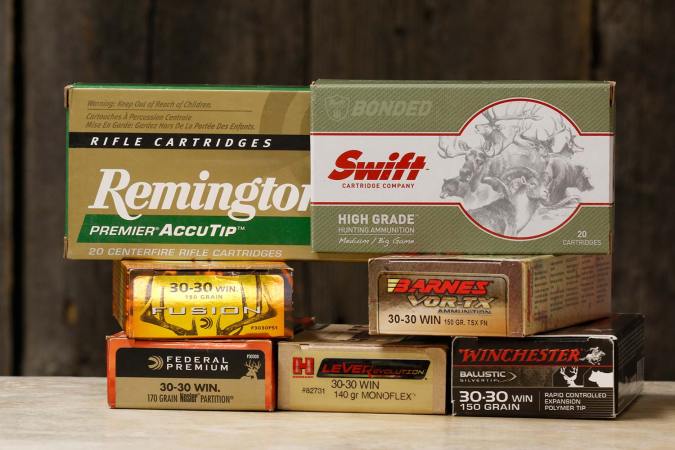We may earn revenue from the products available on this page and participate in affiliate programs. Learn More ›
The .338 Federal is the best deer and elk cartridge you’ve probably never fired or maybe never heard of. But you should have. This efficient short-action cartridge flattens game like the hammer of Thor without kicking you in the shoulder like a stubborn mule.
So why is it so uncommon? Well, it has a couple of “issues” that turn many hunters off. One, it throws heavy .338 bullets. Once hunters in the U.S. get to .308, they’re pretty much done. The old .30/06, the .308 Winchester, or any of our many .300 magnums will handle any game stateside and most anything anywhere else on the globe. So why go bigger? Second, the .338 Federal launches its 180- to 250-grain bullets from a small, short-action case (.308 Winchester). Most shooters have no problem with short-action cartridges if they throw bullets faster than the .308. That’s why the .243 Winchester, .260 Remington, 6.5 Creedmoor, 7mm-08 Remington, and now .277 Fury are wildly successful. The .338? It’s hiding in the basement.
Before we dive more deeply into why this cartridge gets no respect, let’s outline what it does. Yes, it’s pretty much just the .308 necked up to take .338-inch bullets. But here’s the thing: When loaded with 180-grain bullets, the little .338 kicks out more muzzle energy than a 7mm Remington Magnum pushing 160-grain bullets. It recoils less than a .30/06 throwing 180-grain bullets and at 300 yards drops only a measly 1/2-inch more.
If that doesn’t impress you, look at it this way. Load 210-grain bullets in a .338 Winchester Magnum and a .338 Federal. Zero both for their Maximum Point Blank Ranges (MBPR). At 300 yards the Federal will drop just 1.5 inches more than the Winchester Magnum. And it’ll slap your shoulder with 12 ft/lbs less recoil.
All of this should impress the many North American hunters who celebrate the mid-caliber deer rounds of the good old days, like the 32 Winchester Special and 35 Remington. Those, the old timers insist, put deer down now—hard. Heavy bullet. Wide bullet. Dead deer.
I’m not convinced a small increase in bullet diameter—say from a .277-inch or .280-inch to a .308-inch—makes a major difference in killing performance, but stepping up to .338-inch should make an impression.
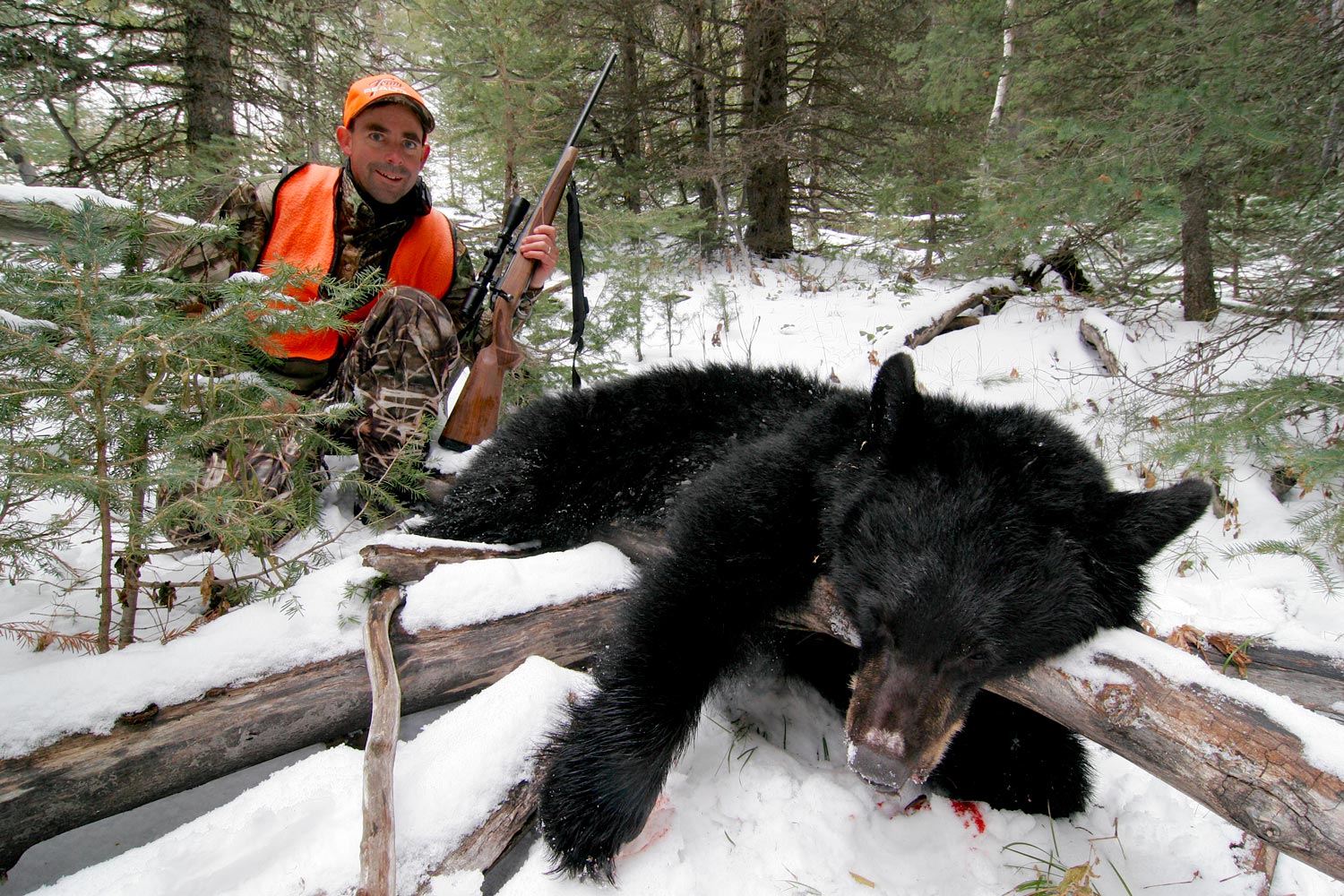
So why, then, does the .338 Federal languish in obscurity? It was a successful wildcat back in the 1970s. Federal, in conjunction with Sako, legitimized it in 2006. That was about the time the 6.5 Creedmoor hatched. Why aren’t more writers writing about the virtues of the .338 Federal and, more importantly, why aren’t more deer, elk, bear, and moose hunters shooting it? Here is a potent cartridge that fits the popular, light, handy short-action rifles. It keeps pace with popular and effective cartridges. It either anchors game quickly or inspires a blood trail a blind house cat could follow. Let’s compare ballistic data from four different bullets to pad the .338′s resume. This data was gleaned from Nosler’s Reloading Guide 8 and Hornady 10th. MPBR was calculated for an 8-inch target.
1. 160-grain Barnes TTSX
- MV: 2,900 fps
- MPBR: 308 yards
- Muzzle Energy: 2,988 ft/lbs
- Recoil in 8# rifle: 19.6 ft/lbs
- 1,500 ft/lbs energy range: 330 yards
Double Tap ammo reportedly loads this all copper hollow point to the .338 Federal’s top speed of 2,900 fps. Your mileage may vary. But even if you handload to just 2,800 fps, this is the ultimate flat-shooter for the .338. Given the weight retention and penetration potential of the Barnes TTSX, this relative lightweight should more than suffice for whitetails, mule deer, sheep, and mountain goats. It should be perfect for pronghorns, although with a B.C. of just .342, you’ll have to watch the wind deflection. At 300 yards a 10 mph right angle wind will bump it 9 inches. Bullet energy doesn’t fall below 1,500 ft/lbs until 330 yards, and at 500 yards it’s still packing 1,000 ft/lbs of energy.
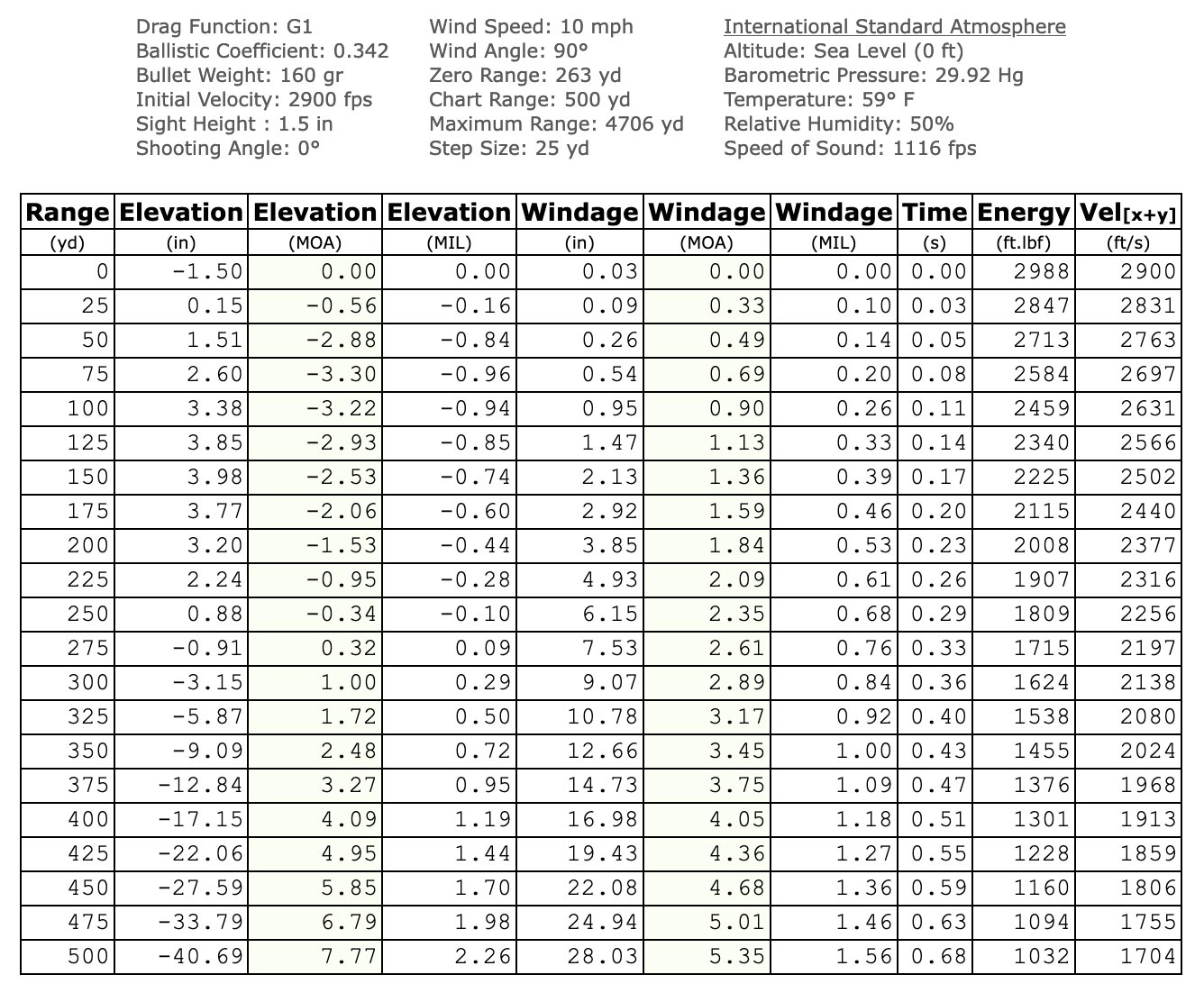
2. 180-grain to 185-grain Bullets
- MV: 2,700 fps
- MPBR: 290 yards
- Muzzle Energy: 2,914 ft/lbs
- Recoil in 8# rifle: 20.9 ft/lbs
- 1,500 ft/lbs energy range: 380 yards
A 180- to 185-grain .338 bullet is light for this caliber, but fast. A full-house load might drive it about 2,750 fps from a 24-inch barrel, somewhere in the 2,650 to 2,700 fps range from a more convenient 22-inch barrel. This is about 100 fps faster than the parent .308 Win. case can push its more aerodynamically efficient 180-grain bullet. The difference is due to the larger surface area of the bullet on which internal gas pressures can push. This is a good bullet weight for delivering reasonably flat trajectory. Zero to keep all shots inside of an 8-inch target and trajectory will peak 4 inches high at 150 yards. The bullet won’t drop 4 inches below point-of-aim until about 290 yards. Muzzle energy doesn’t drop to 1,500 ft/lbs until about 380 yards. This strikes me as a good option for whitetails, mule deer, sheep, and pronghorns. I wouldn’t be afraid to use it on caribou either. Or elk for that matter, but there are better options for them.
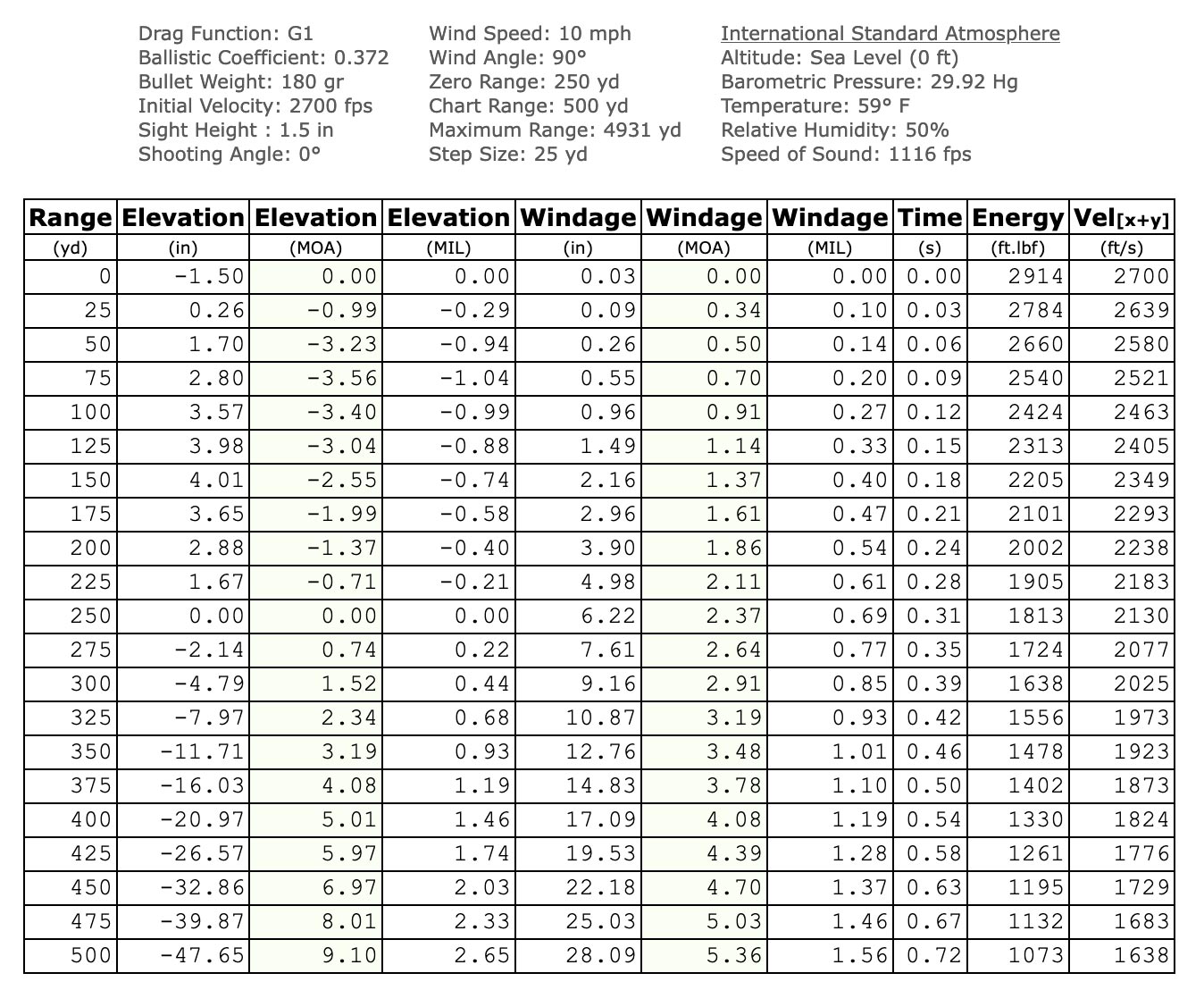
3. 200-grain to 215-grain Bullets
- MV: 2,530 fps
- MPBR: 278 yards
- Muzzle Energy: 2,843 ft/lbs
- Recoil in 8# rifle: 21 ft/lbs
- 1,500 ft/lbs energy range: 355 yards
This is a fairly large spread of bullet weights, so these numbers aren’t exact for all bullets in this class. This group represents perhaps the optimum all-round weight class for the .338 Federal. You pick up a bit more energy over the 180-grain bullets without substantially more recoil. Trajectory suffers slightly, the bullets peaking 4 inches high at 125 yards and falling 4 inches low at 278 yards. By 400 yards the drop is about 22 inches, so this isn’t the best long-range, open country projectile. But memorize your trajectory curve, nail the range with a laser, and you should be good to 400 yards even though the bullet is dropping almost 2 feet. Energy stays just above 1,500 ft/lbs at 355 yards, too. We’re talking solid elk numbers here. Bullet energy doesn’t drop below 1,000 ft/lbs until well past 500 yards.
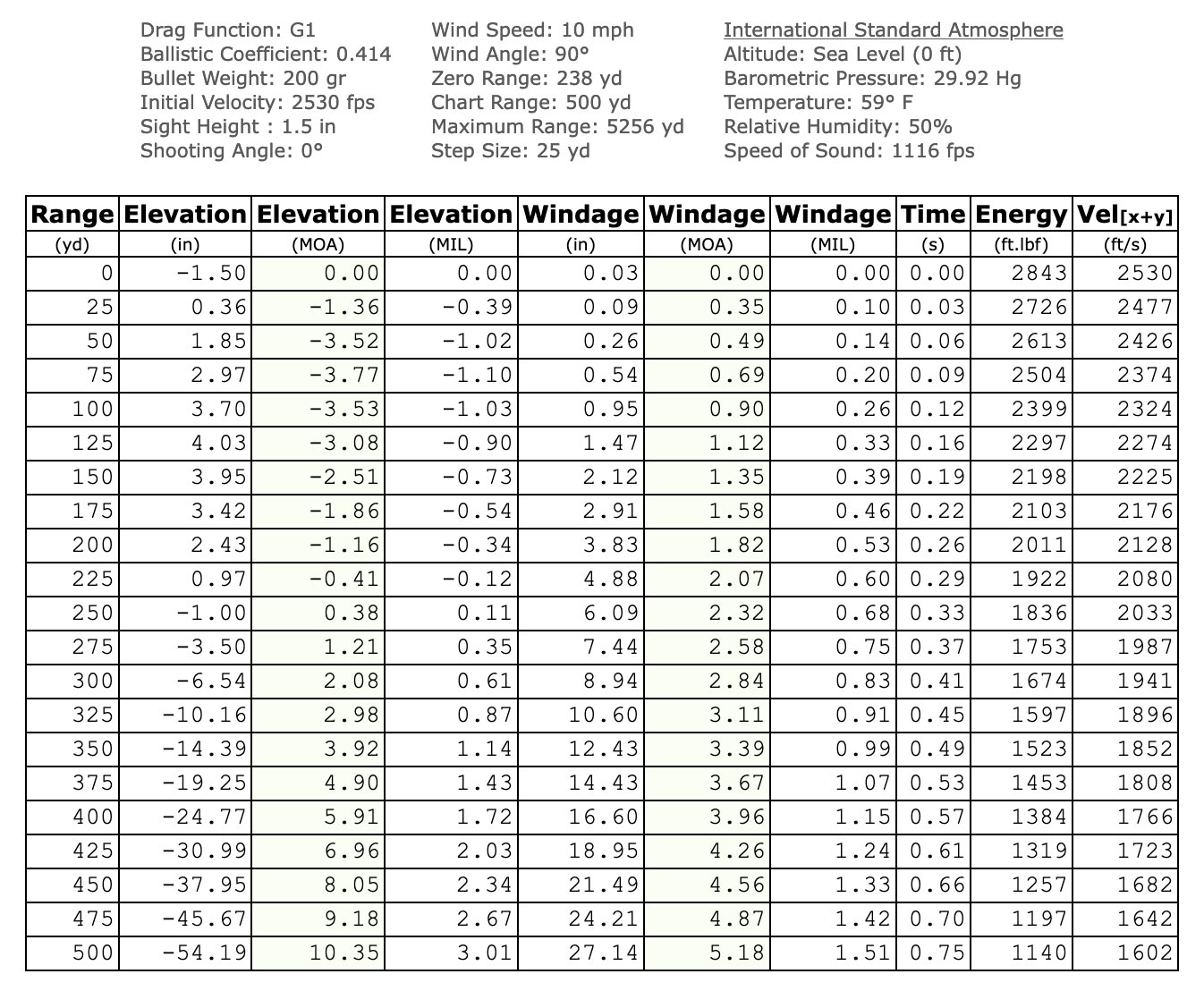
4. 225-Grain Bullets
- MV: 2,428 fps
- MPBR: 275 yards
- Muzzle Energy: 2,946 ft/lbs
- Recoil in 8# rifle: 23.3 ft/lbs
- 1,500 ft/lbs energy range: 455 yards
This is our heavyweight for the .338. They make 250-grain and even 300-grain .338 bullets, but both are just too long to get useful velocity out of this short case. No factory loads are offered with heavier than 225-grain bullets and no handloading manuals I’ve seen list data for anything heavier. Now, a MV of just 2,428 might strike you as SLOW, but keep in mind this is about 200 fps faster than the famous deer-slaying .30/30 Winchester can push a 170-grain bullet. If the .30/30 has piled up even half the venison it’s credited with, it’s one heck of a deer round. Doesn’t that suggest this .338 Federal is deadlier than that?
Read Next: The .30/06 Springfield: Why This Old Cartridge is Still the Best for Big Game Hunting
I’ll confess, I haven’t worn out any .338s in the field, but had the honor of dropping an elk with a Sako M85 chambered for the then-new 338 Federal. As I recall I was shooting a 185-grain Barnes TSX. When a raghorn bull walked out of the snowy pines bordering Montana’s Upper Canyon Ranch, I pulled the trigger. In a micro-second that bullet crossed 275 yards -10°F air and absolutely floored that elk.
Later, I borrowed a delightfully short, light, balanced Kilimanjaro bolt-action in .338 to drop a big Missouri feral hog and a small deer. Federal’s under-sung little .338 certainly deserves more attention than it’s gotten thus far. Anyone wanting more thump on the target without too much more to the shoulder should give this delightfully balanced, hard-hitting cartridge a ride.
